Conflict Zones
Where did India hit Pakistan? Mapping Operation Sindoor and border strikes | India-Pakistan Tensions News
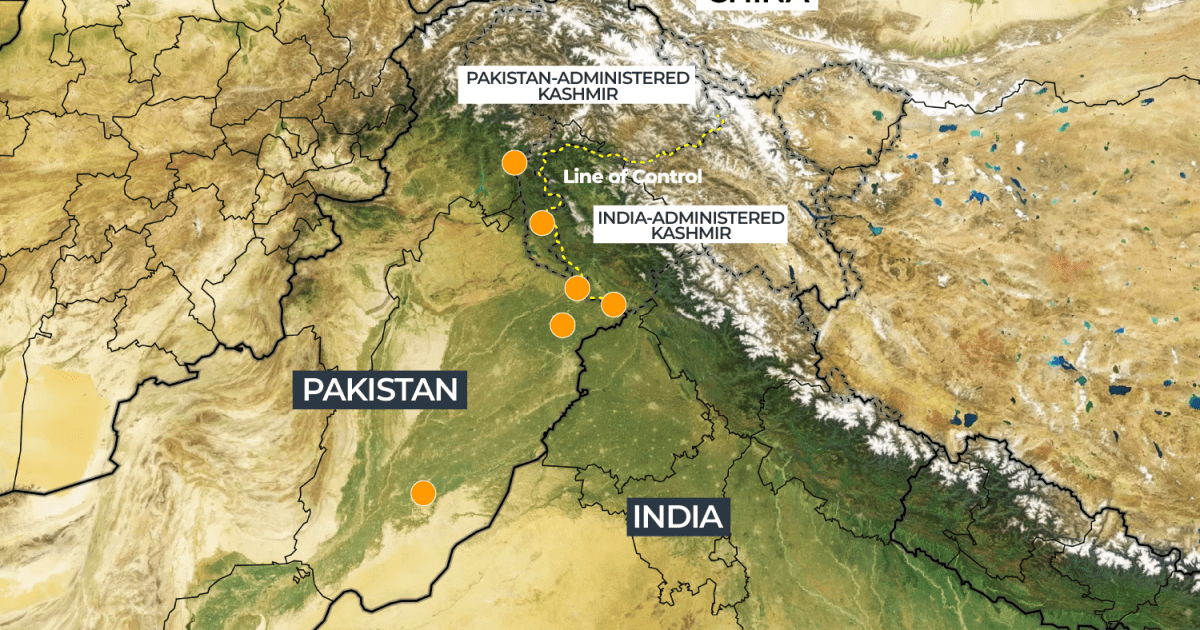
EXPLAINER
Pakistan says India’s missile attacks on six locations killed at least eight people and wounded more than 35.
Just after midnight on Wednesday, India’s army launched Operation Sindoor, hitting nine sites it described as “terrorist infrastructure” in Pakistan and Pakistan-administered Kashmir.
Pakistan’s armed forces said India’s military attacked six different places in Pakistan and Pakistan-administered Kashmir, launching 24 strikes, killing at least eight people and wounding more than 35.
The locations targeted in the attacks include:
Ahmedpur Sharqia, near Bahawalpur (Punjab province) – The deadliest strike occurred here, where a mosque compound was hit, killing at least five people, including a three-year-old girl, according to Lieutenant General Ahmed Sharif Chaudhry, spokesperson for the Pakistan Armed Forces.
Muridke city (Punjab province)
A village near Sialkot (Punjab province)
Shakargarh (Punjab province)
In Pakistan-administered Kashmir, two locations were also hit:
Muzaffarabad and Kotli – where two mosques were destroyed, killing a 16-year-old girl and an 18-year-old boy.

Pakistani officials claim their forces have also shot down five Indian warplanes. India did not immediately comment.
The Indian Army says Pakistani artillery fire killed at least three people in Indian-administered Kashmir.
Where is Kashmir?
Located in the northwest of the Indian subcontinent, Kashmir lies at a high altitude, with much of the region rising over 1,500 metres (4,900 feet) above sea level. It covers an area of 222,200 square kilometres (85,800 square miles).
The population is overwhelmingly Muslim, with approximately four million people living in Pakistan-administered Kashmir and about 13 million in Indian-administered Jammu and Kashmir.
The de facto border that divides Pakistan-administered Kashmir and Indian-administered Kashmir is known as the Line of Control (LoC). The line originally marked the military front when the two countries declared a ceasefire in January 1949 after their first war over Kashmir. It was formally named the LoC under the 1972 Simla Agreement, signed after the 1971 war that resulted in the creation of Bangladesh.

Who controls Kashmir?
India, Pakistan and China each claim parts of Kashmir.
Pakistan controls the northern and western portions, namely Gilgit and Baltistan and what Pakistan calls Azad Kashmir or “free Kashmir”. India controls the southern and southeastern parts, including the Kashmir Valley and its biggest city, Srinagar, as well as Jammu and Ladakh.
Pakistan calls Indian-administered Kashmir “Indian-occupied Kashmir”. India returns the favour – it calls Pakistan-administered Kashmir “Pakistan-occupied Kashmir”.

What happened during the Pahalgam attack?
On April 22, armed men opened fire on a group of tourists in Indian-administered Kashmir, killing 26 men in one of the deadliest attacks on tourists in decades.
The attack occurred in the Baisaran meadow, in Pahalgam, a well-known tourist destination located 50km (32 miles) southeast of the regional summer capital, Srinagar.
The Resistance Front (TRF), a little-known armed group, which India insists is a proxy for the Pakistan-based Lashkar-e-Taiba, claimed responsibility for the attack.

India has implied it believes Pakistan may have indirectly supported the Pahalgam attack – a claim Pakistan strongly denies.
Prior to Wednesday’s attacks, both countries had engaged in tit-for-tat diplomatic swipes at each other, including cancelling visas for each other’s citizens, recalling diplomatic staff and closing airspace to each other’s carriers.
Conflict Zones
What can be learned from the latest conflict between India and Pakistan? | India-Pakistan Tensions

A tense ceasefire holds days after the most intense hostilities in decades.
Feelings of relief and hope are sweeping India and Pakistan.
The latest flare-up in hostilities that killed at least 60 people across the two countries has come to a dramatic halt after four days.
Nearly 30 countries including the United States are reported to have been involved in getting the ceasefire agreed.
The administration of US President Donald Trump, which announced the truce, has proposed a new round of talks at a neutral venue to try and end the bitter rivalry.
A dispute over divided Kashmir, India’s accusation that Pakistan is backing terrorist attacks inside its territory, and differences over the sharing of river water are all issues that have been festering for decades.
So are both sides at last ready to negotiate?
Presenter: Cyril Vanier
Guests:
Walter Ladwig – Senior lecturer in International Relations at King’s College London
Elijah Magnier – Military and political analyst
Shashank Joshi – Defence editor of The Economist newspaper
Conflict Zones
Explosions, violations reported after India and Pakistan agree ceasefire | Conflict News
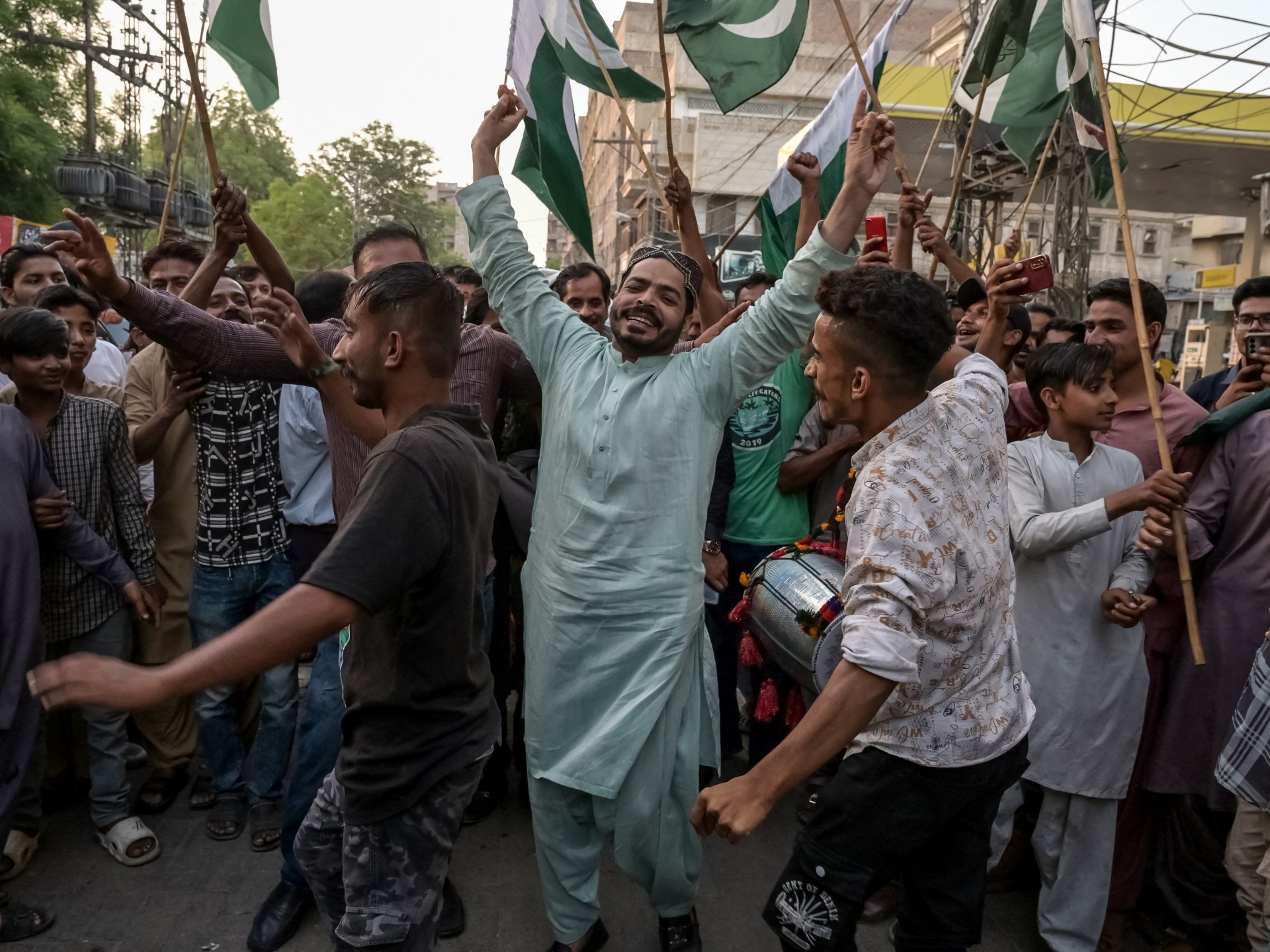
India and Pakistan have agreed to an immediate ceasefire after days of military escalation, deadly cross-border attacks, accusations and counter accusations, had raised acute concerns that the two nuclear-armed neighbours would engage in an all-out war for the fifth time since 1947.
But violations of the truce were reported later on Saturday as explosions rang out across parts of Indian-administered Kashmir.
Military officials from both countries had spoken to each other and agreed that all fighting would stop at 17:00 Indian time (11:30 GMT) on Saturday, bringing a halt to all firing and operations by land, air, and sea. This followed heavy overnight exchanges Friday into Saturday.
India’s Foreign Secretary Vikram Misri said the two military chiefs would speak to each other again on May 12.
“Pakistan has always strived for peace and security in the region, without compromising on its sovereignty and territorial integrity,” Foreign Minister Ishaq Dar said.
The announcement had met relief and joyous scenes by residents in both countries and in the areas of disputed Kashmir that each administers.
But just hours after the ceasefire was announced, explosions were heard across the city of Srinagar in Indian-administered Kashmir, according to Omar Abdullah, chief minister of the federal territory. “What the hell just happened to the ceasefire? Explosions heard across Srinagar,” Abdullah posted on X.
Al Jazeera’s Osama Bin Javaid, reporting from Lahore, Pakistan, said, “People are welcoming the ceasefire, but we are also reminded how precarious it is; ceasefire violations are already happening across the Line of Control in the disputed Kashmir region.”
“We’ve been hearing from local sources that there has been an exchange of fire in multiple locations in the Kashmir region, and there are some projectiles that have entered the Pakistani airspace, as well”, he said.
“We’re also hearing the loud explosions in Srinagar, similar to what was heard early Saturday and in the afternoon. Air sirens are all across, and there’s a power shutdown,” journalist Umar Mehraj told Al Jazeera from Srinagar.
“I can see projectiles flying, projectiles in the sky. It’s very unclear if they are missiles or air defence intercepting these attacks. Similar reports of the explosions are being heard in Baramulla and Jammu,” said Mehraj.
Electricity was cut off across multiple localities, adding to the confusion. With no official clarification on the nature of the blasts, some residents described feeling “abandoned and unprepared”.
“One of the blasts was so powerful it made the walls tremble. Authorities are not clarifying what is going on; we do not have any shelters, nor did we hear any sirens. We do not know what to do. There is only fear,” one Srinagar resident told Al Jazeera.
The ceasefire appears to have been mediated by international actors, but there are conflicting reports as to which countries played a crucial role.
US President Donald Trump claims it was the US – he was first to declare it on Truth Social post: “After a long night of talks mediated by the United States, I am pleased to announce that India and Pakistan have agreed to a FULL AND IMMEDIATE CEASEFIRE”.
“Congratulations to both Countries on using Common Sense and Great Intelligence,” he wrote.
Al Jazeera’s Mike Hanna, reporting from Washington, DC, noted, “There are questions about why the US did announce first. What sort of leverage does it have over India and Pakistan? We do know that it was a multilateral attempt to get a ceasefire. We do know, as well, that the United Kingdom has just signed a major trade deal with India, so it would also have great sway in this. Still, the US appears to be taking it further.”
However, Dar told broadcaster Geo News that Pakistan and India had agreed to a “full-fledged” and “not partial” ceasefire, adding that three dozen countries were involved in the diplomacy that secured it.
US Secretary of State Marco Rubio said the agreement also includes plans for broader talks at a neutral venue, which conflicts with a statement published on social media by India’s Ministry of Information and Broadcasting that says, “There is no decision to hold talks on any other issue at any other place.”

Broader Issues
Amid the cessation of hostilities, India and Pakistan have also agreed to a broader dialogue on various issues.
Two government sources told the news agency Reuters that all measures taken by India against Pakistan after April 22, including on trade and visas, remain in place.
Al Jazeera’s Osama Bin Javaid, reporting from Lahore, Pakistan, said that for the Pakistani side, the water issue is crucial “because India has suspended its related treaty with Pakistan, which affects the livelihood and agriculture in this country”.
Four government sources told Reuters that the Indus Waters Treaty, signed in 1960 between India and Pakistan, remains suspended.
The treaty regulates the sharing of water from the Indus River and its tributaries between the South Asian nations. India pulled out of it last month. It is crucial to agriculture in both nations.
“There are real fundamental political issues that need to be addressed so we don’t find ourselves again in a militarised crisis,” Elizabeth Threlkeld, director of the South Asia programme at the Stimson Centre, told Al Jazeera.
“The timing is significant since there is significant water flow between India and Pakistan because of the season at the moment. But in a few months’ time, that will start to dry up,” she said.
India does not necessarily have the infrastructure to meaningfully divert water right now, but it will gain that capacity when there’s less flow. So, that will have to be on the agenda of the talks if the two sides are to come together,” she added.

‘God has been kind to us for now’
Following the announcement of a ceasefire, residents on both sides of the Line of Control in Kashmir expressed a sense of relief, with many praying for a lasting solution to the Kashmir conflict.
“I was extremely anxious about what was happening,” 25-year-old Rumaisa Jan, a resident of Srinagar in Indian-administered Kashmir who has her wedding scheduled next week, told Al Jazeera. “This is the wisest decision taken after so many lives have been lost. We want peace and an end to all these hostilities.”
Firdous Ahmad Sheikh, who runs a travel agency in the city, said he was frustrated by Kashmir being turned into a “battleground” by the two countries.
“My only fear is that things could escalate again in future. These countries must sit together and find a political solution to Kashmir once and for all. I pray our children don’t have to witness such times again.
“God has been kind to us for now.”

In Muzaffarabad, capital of Pakistan-administered Kashmir, residents welcomed the ceasefire, saying they hope it will bring long-awaited relief to a region that has borne the brunt of recurring conflict.
“For us, peace means survival,” said Zulfikar Ali, a resident. “We’ve suffered enough. I’m glad that both Pakistan and India have made a sensible decision.”
Conflict Zones
India and Pakistan agree ceasefire: What does it mean? | India-Pakistan Tensions News
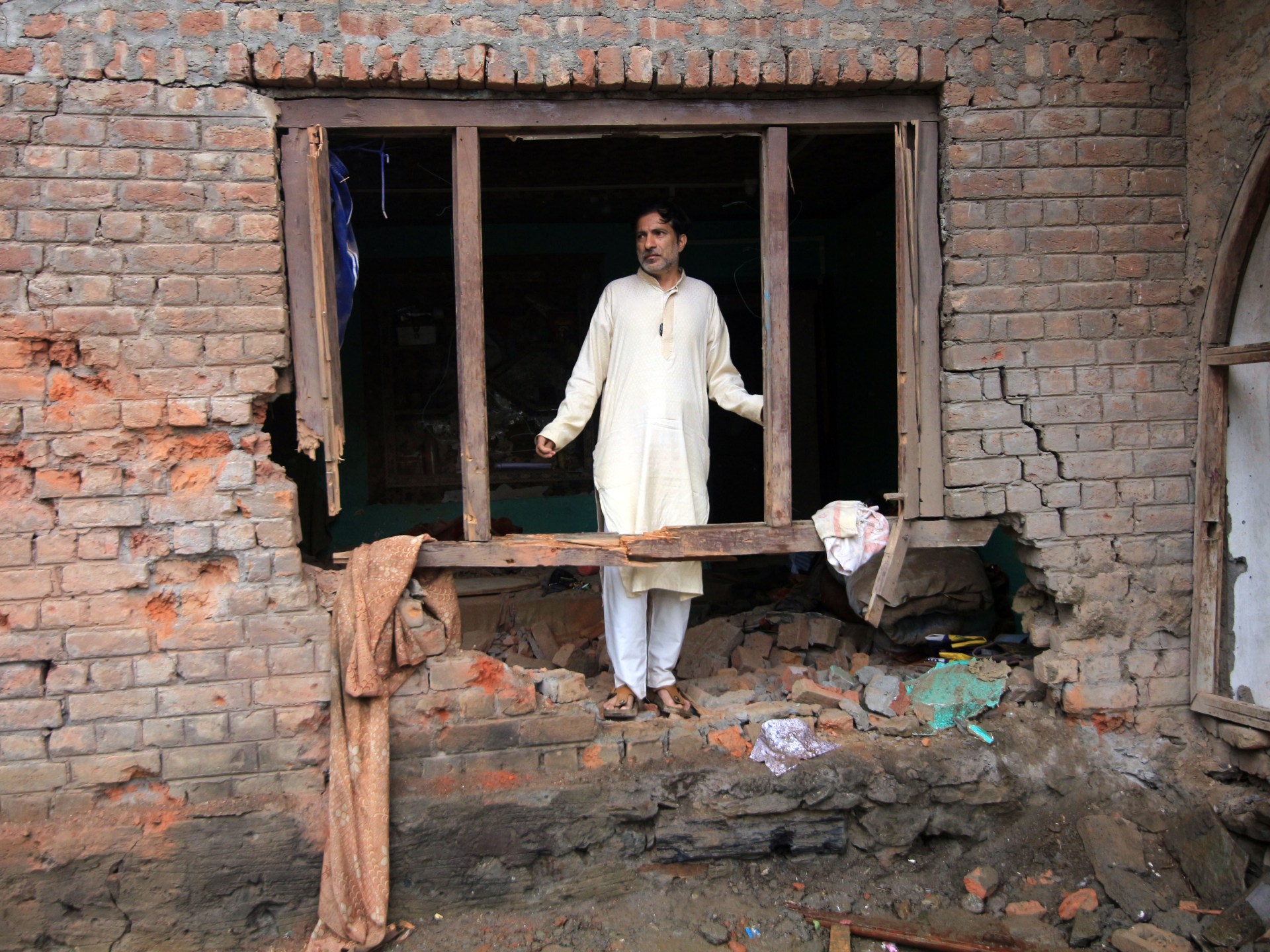
India and Pakistan have reached a ceasefire agreement following a brief period of hostilities over the past few days, United States President Donald Trump announced on Saturday.
Earlier on Saturday, the two neighbours targeted each other’s military sites as Pakistan launched “Operation Bunyan Marsoos” after three of its own airbases were hit by India’s air-to-surface missiles. Both sides claimed to have intercepted most projectiles, but also admitted that some strikes caused damage.
More than 60 people have been reported killed since India launched missiles under “Operation Sindoor” on Wednesday, which it said targeted “terrorist camps” in Pakistan and Pakistan-administered Kashmir. Pakistan has confirmed the killing of 13 people on its side of the Line of Control (LoC), the de facto border between the two countries dividing the disputed Kashmir region.
The strikes had raised fears of a wider conflict between the two nuclear-armed neighbours. While international mediation has resolved disputes between India and Pakistan before, it remains to be seen if this ceasefire will hold and whether people will be able to relax.
What has been agreed upon by India and Pakistan?
“After a long night of talks mediated by the United States, I am pleased to announce that India and Pakistan have agreed to a full and immediate ceasefire,” Trump wrote on his Truth Social platform on Saturday.
“Congratulations to both Countries on using Common Sense and Great Intelligence. Thank you for your attention to this matter!” Multiple countries are understood to have been involved in these talks.
Pakistan’s Foreign Minister Ishaq Dar and Indian Foreign Secretary Vikram Misri confirmed the ceasefire shortly after.
“It was agreed between them that both sides would stop all fighting and military action on land, air and sea with effect from 17:00 Indian Standard Time today [11:30 GMT],” Misri said in a short statement.
“Instructions have been given on both sides to give effect to this understanding. The directors general of military operations will talk again on May 12 at 12:00.”
India and Pakistan have also activated military channels and hotlines following the deal, according to Dar.
Will the two countries engage in further talks now?
US Secretary of State Marco Rubio also said India and Pakistan had agreed to start talks on a “broad set of issues at a neutral site”.
However, in a statement on social media, India’s Ministry of Information and Broadcasting partially denied this, stating: “There is no decision to hold talks on any other issue at any other place.”
Subir Sinha, director of the South Asian Institute at SOAS University of London, told Al Jazeera that broader bilateral talks would be a very challenging process as India had previously rejected such a development.
“One of the arguments about this so-called robust policy towards Pakistan that Modi’s government had adopted was that it was no longer possible to sit down and discuss a broad and long-term commitment to resolve issues,” Sinha said.
Therefore, this would mark a reversal of the Indian government’s position and could play out poorly with the right wing in India, whose members have been calling for an attack on Pakistan.
Sinha said both the Indus Waters Treaty, which India suspended its participation of and the Simla Agreement, which Pakistan threatened to pull out of, will need to be fully resumed and “to be looked [at] perhaps as bases for moving forward”.
Were India and Pakistan actually at war?
Officially, no. Despite intense military exchanges, including missile strikes, drone attacks, and artillery shelling, neither government made an official declaration of war.
India and Pakistan instead characterised their military actions as specific coordinated “military operations”.
Pakistan on Saturday launched a retaliatory assault it named “Bunyan Marsoos”, Arabic for “Wall of Lead”, just days after India initiated “Operation Sindoor“, responding to a deadly attack on tourists in Pahalgam on April 22, which it blamed on Pakistan-based armed groups.
However, that is not unusual for these two countries. They have not officially declared war in previous major conflicts, even as thousands of soldiers and civilians died.

Has third-party intervention solved disputes between India and Pakistan before?
Yes. Third-party mediation has resolved disputes since 1947, when the subcontinent split through partition and India and Pakistan fought their first war. After a yearlong war over ownership of the princely state of Jammu and Kashmir, a United Nations-brokered ceasefire effectively split Kashmir between Indian- and Pakistan-administered regions in 1948.
The 1965 Indo-Pakistani War ended with the Tashkent Declaration in January 1966, following mediation by the erstwhile Soviet Union. The accord saw Indian Prime Minister Lal Bahadur Shastri and Pakistani President Ayub Khan agree to pull back to pre-war positions and restore diplomatic and economic ties.
During the 1999 Kargil War, Pakistani troops crossed the LoC and seized Indian positions. Then-US President Bill Clinton convinced Pakistani Prime Minister Nawaz Sharif to withdraw, warning of international isolation.
In 2002, then-US Secretary of State Colin Powell claimed he and his team had mediated the end of a tense stand-off along the LoC following an attack on the Indian Parliament in December 2001. The following June, Powell said that through negotiations, he had received assurances from President Pervez Musharraf of Pakistan that “infiltration activity” across the LoC would cease and that armed groups would be dismantled on Pakistani territory.
What constitutes a war?
There is no single definition. International humanitarian law, such as the Geneva Conventions, uses the term “international armed conflict” instead of “war”, defining it more broadly as any use of armed forces between states, regardless of whether either side calls it a “war”.
In modern international law, all uses of force are categorised as “armed conflict” regardless of justifications such as self-defence, according to Ahmer Bilal Soofi, an advocate in the Supreme Court of Pakistan who also specialises in international law.
The suspension of a treaty can also signal the start of war, he added. India suspended its participation in the landmark Indus Waters Treaty with Pakistan on April 23, a move Pakistan described as a “hostile act”.
“Political scientists normally say a war only exists after fighting becomes quite intense – normally 1,000 battle deaths,” said Christopher Clary, assistant professor of political science at the University at Albany. “For governments, though, wars exist whenever they say so.”
Experts argue the recent escalation in military actions by India and Pakistan was as much about signalling strength as they were about military objectives, and was also part of a broader effort to manage domestic and international perception.
Sean Bell, a United Kingdom-based military analyst, said much of the current rhetoric from both India and Pakistan is deliberately aimed at domestic audiences. Each side is “trying to make clear to their own populations that there is a robust military response, and that they’re retaliating for any actions”, he told Al Jazeera. But this tit-for-tat dynamic, Bell warned, risks becoming difficult to stop once it starts.
Why are countries reluctant to formally announce a war?
Following the adoption of the UN Charter in 1945, “no country claims ‘war’ or declares ‘war’ as, legally speaking, it is viewed as unlawful use of force”, Soofi told Al Jazeera.
Officially, being in a state of armed conflict triggers international legal obligations, such as following the rules of armed conflict and being accountable for war crimes.
In the latest India-Pakistan standoff, both sides portrayed the other as the aggressor, insisting it should be the one to de-escalate.
The absence of a formal, universally accepted definition of war means countries can engage in sustained military operations without ever officially declaring war. Ambiguity also allows governments to frame military actions in ways that suit their political or diplomatic goals.
For example, Russia has consistently described its 2022 invasion of Ukraine as a “special military operation”, despite large-scale troop deployments, air strikes and territorial occupation. Similarly, the US referred to the Korean War in the 1950s as a “police action” and framed its long-term activities in Afghanistan and Iraq as “counterterrorism operations”. Israel also often uses terms like “military campaign” or “operation” for cross-border offensives, such as “Operation Protective Edge” during its 2014 war in Gaza.
-
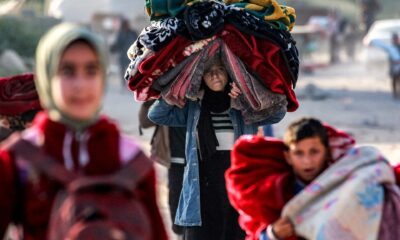
 Middle East2 days ago
Middle East2 days agoWorld could be witnessing ‘another Nakba’ in Palestine, UN committee warns | Israel-Palestine conflict News
-

 Middle East1 day ago
Middle East1 day agoIraq look to former Australia coach Arnold to boost 2026 World Cup hopes | Football News
-

 Education1 day ago
Education1 day agoTrump’s dismantling of Education Department gives states ‘green light’ to pursue voucher programs
-
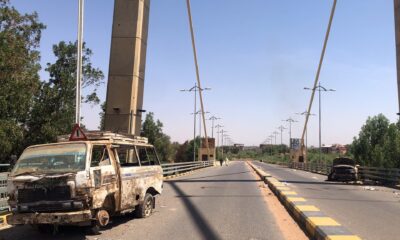
 Middle East1 day ago
Middle East1 day agoAt least 33 people killed in suspected RSF attacks in Sudan | Sudan war News
-
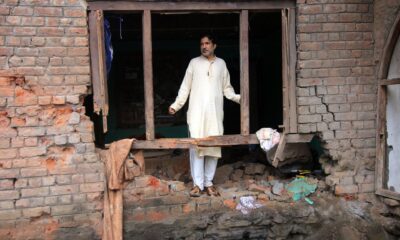
 Conflict Zones1 day ago
Conflict Zones1 day agoIndia and Pakistan agree ceasefire: What does it mean? | India-Pakistan Tensions News
-

 Europe1 day ago
Europe1 day agoRising waters and overtourism are killing Venice. Now the fight is on to save its soul
-
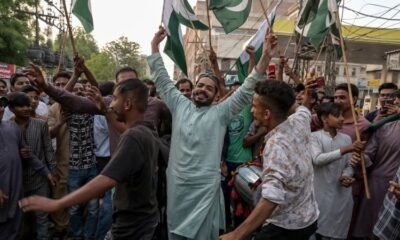
 Asia1 day ago
Asia1 day agoThe US takes credit for India-Pakistan ceasefire, but it was pushing on an open door
-

 Middle East1 day ago
Middle East1 day agoMy nephew asks if he will eat meat only in heaven. I struggle to answer | Israel-Palestine conflict




